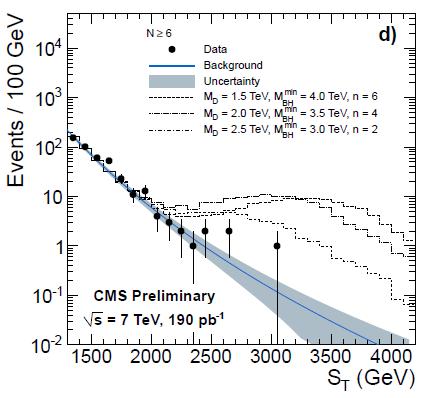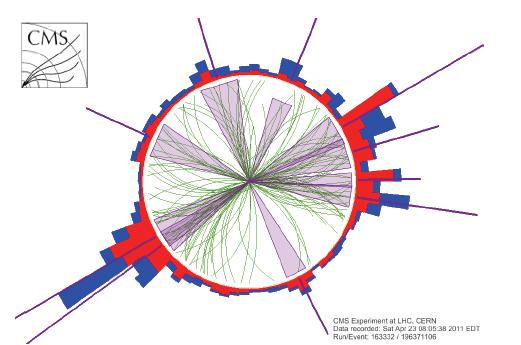The search uses a variable called "S_T", which is the sum of transverse energies of all energetic objects detected in the final state: jets, but also, when present, electrons and muons, as well as photons and missing transverse energy. This variable would be sensitive to the production of black holes, which would produce a enhancement in the high-end of the S_T spectrum. In the figure below you can see what I am talking about, for the subset of events having at least six identified bodies with transverse energy above 50 GeV:

As you can see, the data (black point with error bars) follow the blue background prediction, while enhancements (the dashed curves) would be present at large S_T if black holes existed with the parameter values specified. There are some very high-S_T events in the tail of the distribution, but they are compatible with expected backgrounds; from the agreement, limits can be set on the existence of black holes.
The figure below shows a nice event display, where ten energetic jets are produced together. Calling this a "black-hole candidate" would appear sensationalistic, but it is actually what the CMS experiment does in its public document.

The detector in this graph is seen in its transverse view, just as if you were looking at it from the beam line. Charged tracks are emitted in all directions, and they cluster in 10 different jets of hadrons, which produce as many energy deposits in the calorimeter. The latter are displayed as red and blue bars outside the schematized detector view.




Comments